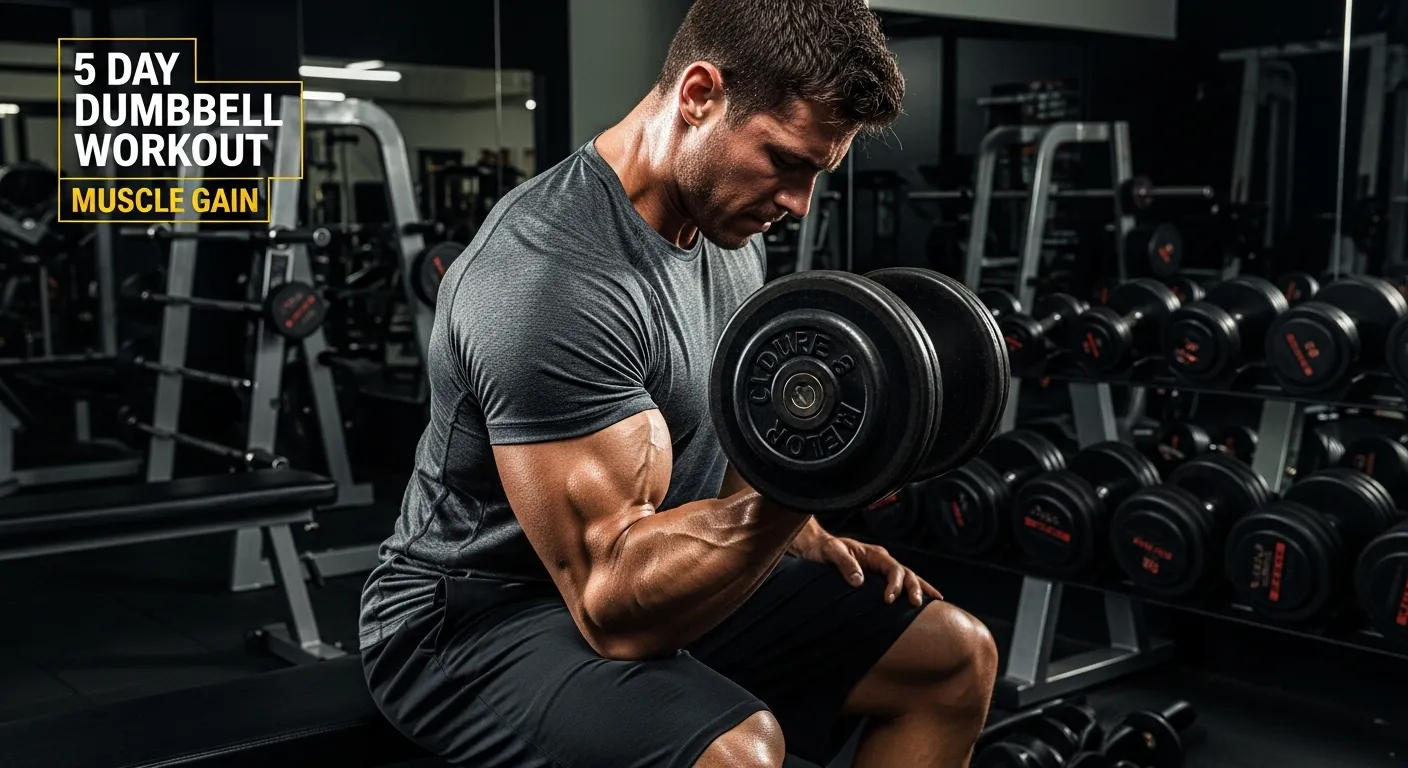Smith Machine Workouts That Build Muscle Fast
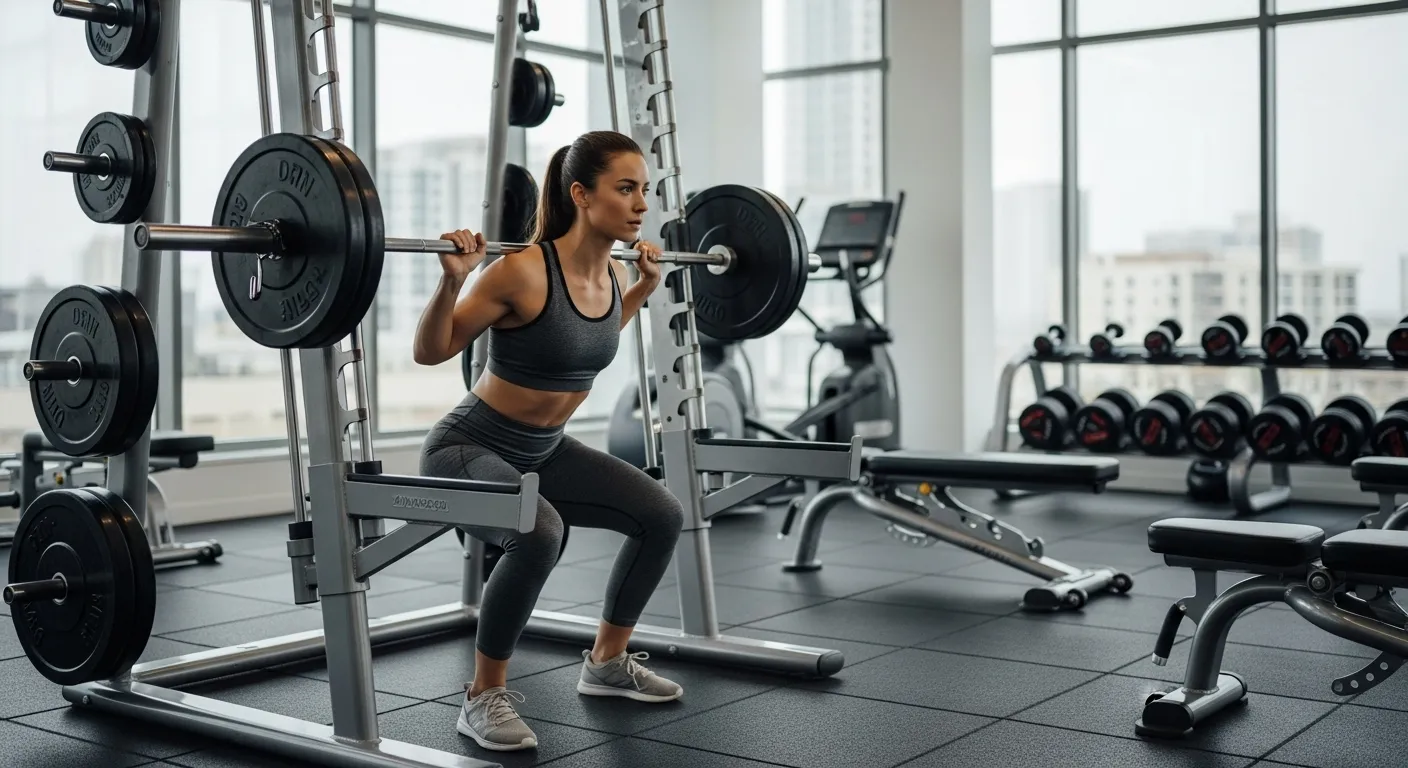
When people talk about the Smith Machine, they usually have strong opinions. Some love it, others roll their eyes. I’ve trained on both sides, old-school free weights and the guided bar path of a Smith. After years coaching lifters, I can tell you, it’s not cheating, it’s a tool. Like any tool, you just need to know when and how to use it.
The Smith Machine is able to assist you in developing strength, stability, and control, only if you decide not to constantly antagonize it. We will review its working principle, the exercises you can perform on it, and the reasons why it should be part of your workout.
What Is a Smith Machine and Why It Exists
Back in the 1950s, Jack LaLanne came up with the idea. Rudy Smith improved it, and gyms adopted it everywhere. The design is simple, a barbell fixed between steel rails. It moves straight up and down. There are safety hooks every few inches, so you can lock the bar mid-set if needed.
It’s not meant to replace free weights. It’s meant to guide movement and improve safety, especially for solo lifters or beginners.
That fixed bar path changes everything, it helps you focus on form, isolation, and control. It removes balance from the equation so you can overload the target muscle. That’s the real benefit.
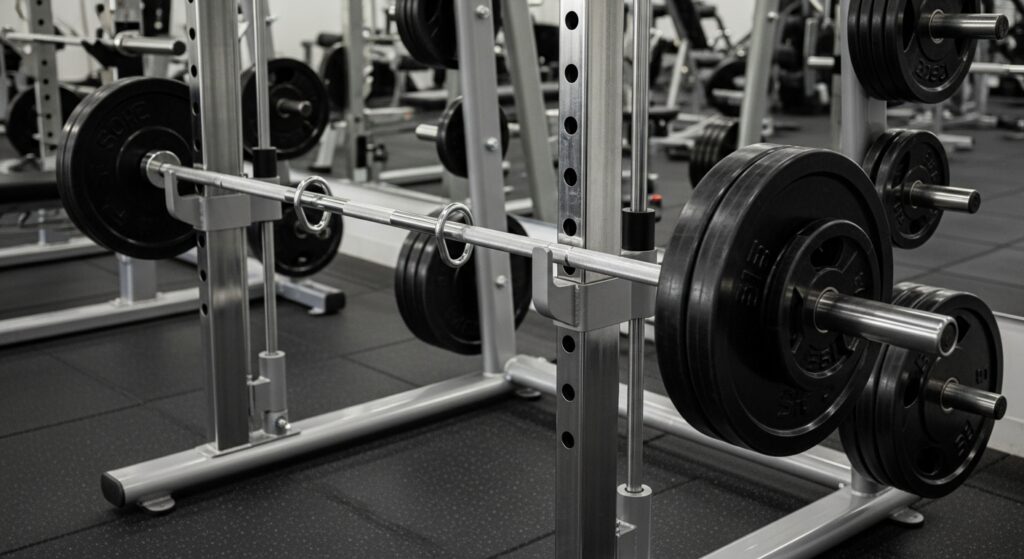
How to Use a Smith Machine Correctly
I’ve seen people misuse this thing more than any other equipment. The biggest mistake? Treating it like a free bar, but it’s not. You can lock the bar path in either a straight line or a small angle. You have to position your feet and body according to that path.
Here’s the short checklist I tell my clients:
| Step | What to Do | Why It Matters |
|---|---|---|
| 1 | Adjust bar height | Bar should sit just below shoulder for squats or bench setup. |
| 2 | Check stoppers | Always know where to twist the bar to rack it. |
| 3 | Align with bar path | Stand so your body follows the bar’s travel line. |
| 4 | Keep control | Smooth tempo, no bouncing. |
| 5 | Focus on feel | Use slow reps for muscle tension. |
Once you get that setup right, you can train nearly every muscle safely, chest, legs, back, shoulders, even glutes.
Why the Smith Machine Works for Strength Training
The Smith Machine gives you something rare, that is freedom from fear. You can go heavier without a spotter. You can push a set close to failure without thinking about dropping the bar.
It’s not better or worse than free weights, just different. When I’m working with beginners, or someone coming back from injury, I often use it for stability training. When I train advanced clients, it’s for volume, more controlled reps, less risk, more burn.
Key Benefits
- Safety: Lockout hooks prevent accidents.
- Isolation: You can hit specific muscles without worrying about balance.
- Consistency: Bar path stays identical, every set.
- Versatility: Works for compound and isolation movements.
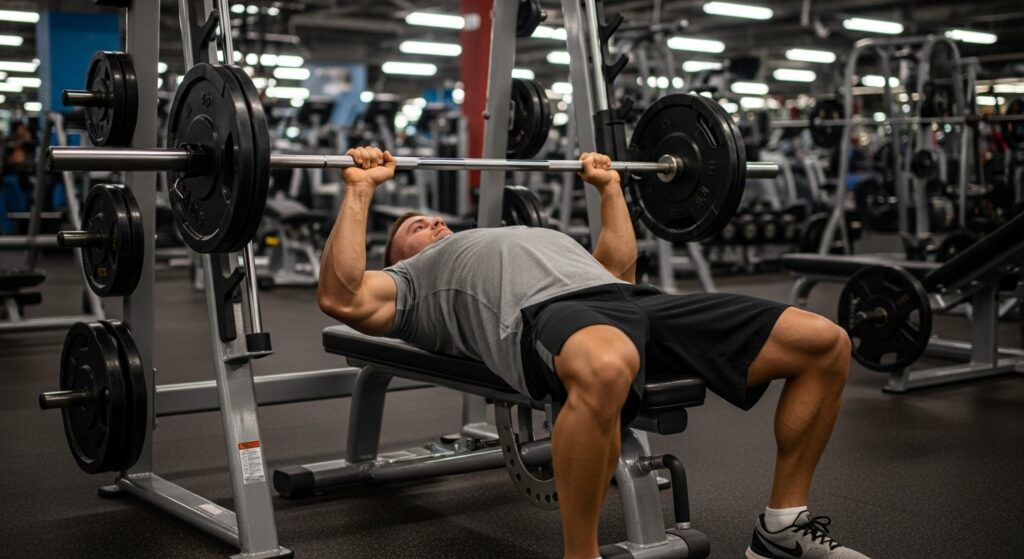
Best Smith Machine Exercises (Full Body)
Here’s where the Smith Machine shines. You can turn one piece of equipment into a total gym if you know the moves.
Smith Machine Squat
Probably the most used (and abused) move on this machine. Position your feet slightly forward, about 6 to 12 inches ahead of the bar. This aligns your hips with the bar path. Keep your core tight. Lower until thighs are parallel, drive up.
You’ll feel more quad engagement because the bar doesn’t shift back. Great for beginners or anyone wanting stable form.
Tip: Keep heels planted. Don’t let the bar guide you. You control it.
Smith Machine Deadlift
Not quite the same as a free-weight deadlift, but still effective. The fixed path helps maintain posture and targets hamstrings and glutes more directly.
For a full stretch, start with the bar around mid-shin height. Keep your spine neutral and push hips back before lifting.
Variation: Try Romanian-style (RDL) for more hamstring activation.
Smith Machine Bench Press
Perfect for chest-focused training days. Flat, incline, or decline, all possible. The fixed bar allows you to push heavy without a spotter.
Line the bar with your mid-chest, lower slowly, and press without locking elbows. For upper chest, raise the bench to 30 degrees and move bar path slightly higher.
Coach tip: Don’t bounce the bar. Touch and go lightly.
Smith Machine Shoulder Press
Set the bench upright or stand under the bar. Keep your grip slightly wider than shoulders. Press up until your arms are near lockout, then control the drop.
This is great for building delts while minimizing lower back strain. Beginners should start seated until their core stabilizes.
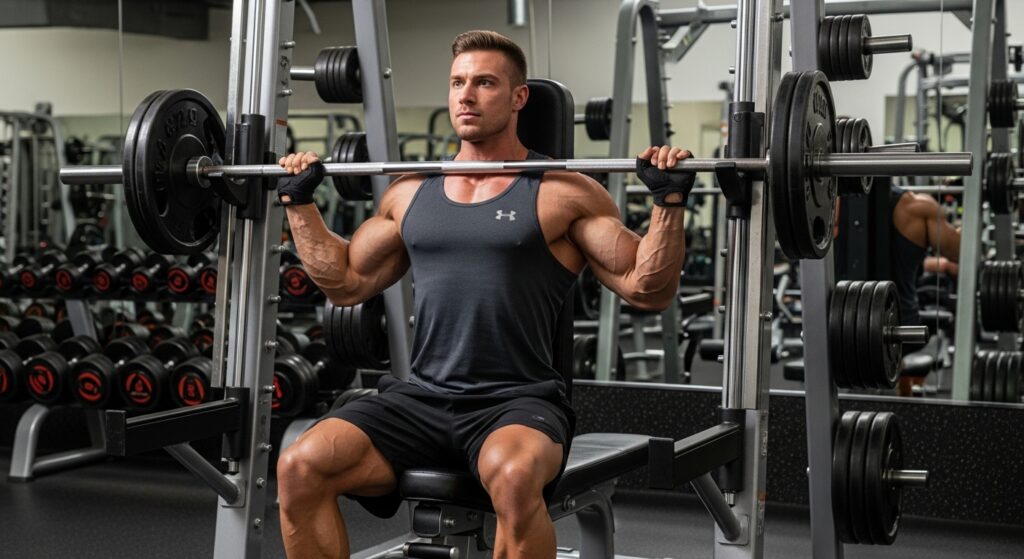
Smith Machine Hip Thrust
A personal favorite for glutes. Use a bench behind you, bar over hips, pad the bar. Roll it into position. Thrust your hips upward, squeeze glutes, pause, lower slow. Because the bar moves straight, you get consistent tension. And you can safely go heavy.
Glute tip: Keep chin tucked, eyes forward, knees at 90 degrees on top.
Smith Machine Lunges
Unstable but rewarding. Step one foot forward under the bar, keep balance, and lower until your rear knee almost touches the floor. The fixed bar helps you maintain balance while loading each leg independently. Alternate legs for symmetry and joint control.
Smith Machine Rows
Set the bar around knee height. Bend over with a flat back. Pull the bar toward your belly button. This version isolates the lats and mid-back more because you don’t waste energy balancing. You can even do single-arm rows by setting a bench sideways.
Smith Machine Calf Raises
Set bar on shoulders, stand on a block or plate. Push through the balls of your feet and lift your heels high and slow reps, but don’t rush. The burn builds shape fast.
Smith Machine Workout Plan (Full Body Split)
Here’s a sample Smith Machine full body workout plan you can use 3 days a week. Perfect for home gym users or anyone who wants a stable setup.
| Day | Exercise | Sets | Reps |
|---|---|---|---|
| 1 | Squat | 4 | 8 to 10 |
| 1 | Bench Press | 3 | 10 |
| 1 | Row | 3 | 10 to 12 |
| 2 | Deadlift | 4 | 6 to 8 |
| 2 | Shoulder Press | 3 | 8 to 10 |
| 2 | Calf Raise | 4 | 15 |
| 3 | Lunges | 3 | 10 per leg |
| 3 | Hip Thrust | 4 | 12 |
| 3 | Incline Press | 3 | 8 to 10 |
Keep rest short, 60 to 90 seconds. Focus on controlled reps and mind-muscle connection.
Smith Machine vs Free Weights
This argument will never die. Let’s settle it quickly.
| Feature | Smith Machine | Free Weights |
|---|---|---|
| Stability | Guided bar path | Requires balance |
| Safety | Built-in hooks | Needs spotter |
| Range of motion | Slightly limited | Natural movement |
| Muscle activation | Slightly lower stabilizer work | Higher stabilizer demand |
| Best for | Isolation, beginners, solo lifters | Overall athletic strength |
If you’re chasing muscle growth, the Smith still delivers. It won’t teach balance, but it lets you focus on tension, which is what builds size.
I mix both in my clients’ routines. Free weights for coordination. Smith Machine for overload. Balance both, you get complete development.
Common Smith Machine Form Mistakes
Even experienced lifters mess this up.
- Wrong stance: Bar path doesn’t match your body, leads to knee or hip strain.
- Overarching back: Especially during presses or squats. Keep core tight.
- Bouncing reps: Reduces muscle tension and increases injury risk.
- Neglecting warm-up: Just because it’s stable doesn’t mean it’s safe cold.
- Rushing range of motion: Control every inch.
If you correct these, you’ll start to respect this machine a lot more.

Smith Machine for Home Gym Use
If you train at home and don’t have a spotter, this machine is gold. It combines safety, versatility, and compact size. You can attach pulleys or benches and get a full gym setup.
I recommend it for beginners, women, and anyone who trains alone. But pick a model with adjustable safety catches and smooth bearings.
Safety Tips for Smith Machine Training
- Always check safety stops before lifting.
- Don’t overload the bar beyond control.
- Keep feet in line with bar travel.
- Warm up joints before heavy sets.
- Twist lock the bar every time you re-rack, don’t drop it.
One simple habit, always treat the Smith like it’s light weight. It’s easy to forget that the bar still carries mass and momentum.
Smith Machine for Beginners
Start light. Focus on feel before load. The Smith helps you build confidence under weight. Once you learn bar control here, transitioning to free weights becomes easier.
I’ve had new lifters nail perfect squats on the Smith within a few weeks, after struggling for months with wobbly form using dumbbells. It’s a stepping stone, not a crutch.
Final Thoughts from the Gym Floor
The Smith Machine isn’t flashy. It won’t make you look hardcore. But it does one thing well, lets you train safely and efficiently. If you treat it like a training partner, not a cheat code, you’ll see results, strength, shape, confidence.
Use it for what it’s good at. Build control, go heavy, and learn your body. That’s what real training is about.
FAQs
1. Is the Smith Machine good for building muscle?
Yes. It provides you overload particular muscles in a controlled way, which helps them to grow and get stronger.
2. Can beginners use the Smith Machine?
Sure. It’s considered one of the most secure ways to learn how to do squats and press exercises.
3. Is Smith Machine better than free weights?
Both different tools. Smith is for control and safety, free weights are for balance and raw strength.
4. How much does a Smith Machine bar weigh?
It usually weighs between 15 and 25 lbs, determined by the brand and counterweight.
5. Can I do a full body workout on the Smith Machine?
Yes, it’s possible to successfully develop all primary muscle groups utilizing both compound and isolation workouts.
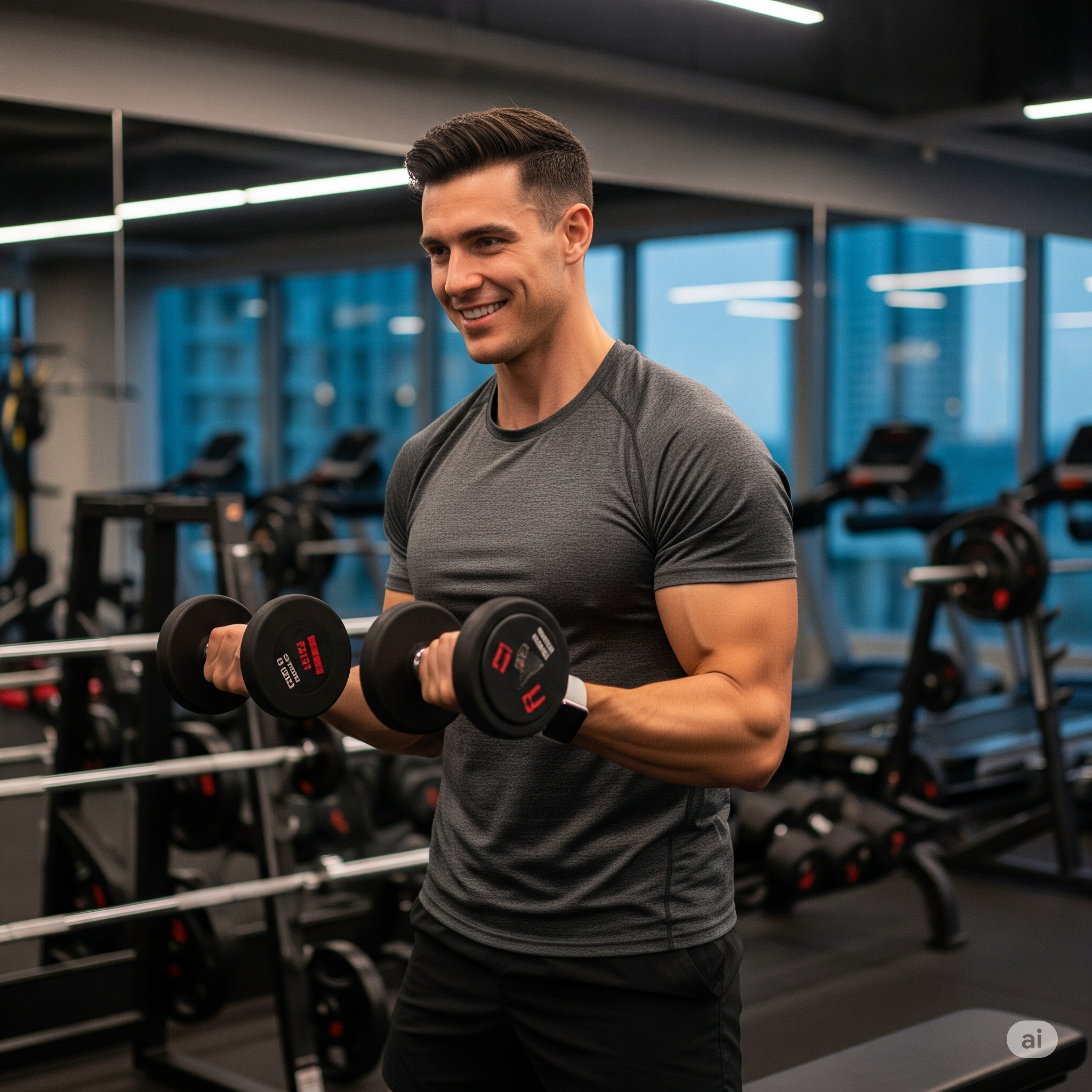
I’m Benjamin Clark, dedicated to elevating your athletic performance. Get targeted fitness plans, injury prevention techniques, sports psychology insights, and the latest in nutrition. Let’s train smarter.

